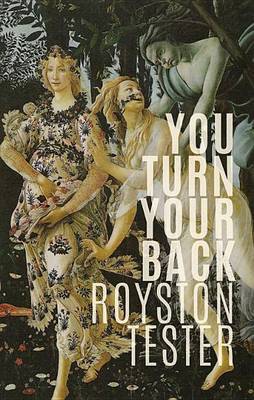Interview with Tightrope Books

Tell us about your book, You Turn Your Back
A collection of short fiction, written in a variety of styles and set in "foreign" yet eerily familiar locales, about people trying to make sense of their predicaments.
Do you have any influences that might help contextualize your work?
See below under 'Salespeople and reviewers…'
What was the impetus for writing this book?
To bring together published work from 1995-2013 and revise the material.
What audience do you have in mind for this book?
Adult, multicultural, immigrant, LGBT.
Salespeople and reviewers often ask us to compare our books to other books. Can you compare your book to someone else's work? (They could have a similar style, subject, or genre that they work in. Think in terms of Canadian as well as US authors/books as they are often separate markets.)
I do admire writers like, say, Norman Levine, Raymond Carver, and Alice Munro. Relatedly, I like the writing (in translation) of Spanish-speaking Roberto Bolaño and Juan Goytisolo. I admire the work of some UK writers, Alison Moore, Jeanette Winterson and, more recently, Eimear McBride (A Girl is a Half-Formed Thing). I love these works for their non-conformity, their stylistic and thematic inventiveness, even obtuseness. McBride, for example, is compared with James Joyce and Samuel Beckett. But are there writers/books closer to home that my book might resemble? It's so difficult to answer this question because there are a variety of styles in the book. The stories were written over a long period and, as a result, a story like "Who Knows Where" (non-traditional) is dramatically different in structure and language from, say, "After Queen Zenobia's Telephone" (traditional). In You Turn Your Back, there's one (rather long) story called "Primavera" that tries to juxtapose the iconography of Botticelli's famous painting with that of Richard Attila Lukacs. Maybe what I'm doing in this collection is to play with different kinds of elements (classic, symbolist writing, (the Botticelli, traditional, side of things), say, juxtaposed with more fragmented, non-traditional, post-modern, ironic forms). Who else does this? I'll need some help answering that question, I think.
Take a stab at writing the back cover copy for your book (between 100 to 150 words):
'Westerners stand on the shores of things,' says a Damascus archaeology student in one of Royston Tester's stories in this third collection from the British-Canadian author, "I'm fascinated how you struggle to live." In settings as varied as industrial England, the Syrian desert, urban Morocco, rural 'expat' Spain, Canada's West coast, and the China-Vietnam border, Tester explores the very human struggles of people caught between cultures, social classes, lovers, family members, and sexualities. In 'Dotty,' a young Canadian woman on a 'work-stay program' in a Cornish village tries to make sense of her affair with an Italian factory owner. In 'Who Knows Where,' two Canadian daughters grapple with their drug-addled mother whose lovemaking is haunted by the ghost of a stillborn baby. In 'Primavera,' Botticelli's painting and its nemesis in Richard Attila Lukacs's artwork play out their canvases in the antics of a louche Canadian film producer and his estranged wife. In 'Face,' a lovesick Chinese-Canadian student lays down the law to his ambitious father over a dinner of monkey brains. In unforgettable, stripped-down prose, the stories in this book observe, with an unflinching eye, those who dare to take steps further—and those who prefer not. Either way, it's a back turned—an angel, or an imp, on your shoulder.
What else would you like to let us know about your book or the process it involved?
Revising stories, some of which were written in the 90's, was a process of retaining the original flavour of the piece but, at the same time, acknowledging that my writing style has changed. The re-calibrating, sensitive to the accessibility of the material, has created a book of stories that feel more rounded and layered somehow. Less strident. Particularly exciting for me was how the lengthy story, "Primavera," has, since its creation in 1998, resonated throughout the book. I hadn't planned this. But evidently both Botticelli's painting (which, incidentally, was one of the few reproductions I had on my student wall when I first came to Canada in 1978) and, later, Richard Attila Lukacs's work have danced about in my subconscious. I have a suspicion that an alternative title for this book could, in fact, be Primavera; how people's lives are a repeated coming of age.
Who loves your work? Can you think of any fans from local media, schools, associations, or other businesses or organizations? Do you have a writing mentor who would say something nice about your book?
Since 2011, I've been studying, part-time, at UBC: an MFA in Creative Writing—the non-residency program, online. Through that, I've made some terrific friends, colleagues, and mentors. I'd say that my classmates there have been extremely encouraging. I've also had terrific support from the profs: Gail Anderson-Dargatz, Annabel Lyon (who's currently my thesis supervisor for the novel, Buggerlugs. To be completed in 2015), Wayne Grady, Michael Winter, and Sara Graefe (Screenwriting). I think that any one of them would find something kind to say. Also, Tamara Faith Berger, one of my classmates who's become a friend and ally.